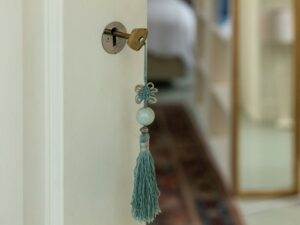There’s more to buying a safe than meets the eye. For example, here’s a question that may have never occurred to you: do you need a fire or a burglary safe? Right now, you’re probably scratching your head telling yourself you weren’t even aware there was a difference.
Trust us, there is. When coming to safes, one size does not fit all. Your safe has to be customized according to your needs.
What do you plan to store in your safe?
Safes come in different metal thicknesses called gauges. This will become important depending on what you need to store.
If you have to store jewelry or cash, a safe with a higher metal thickness is better as it will not be as easy to break into with ordinary tools. Burglary safes have metal thickness above 12 gauge.
If you want to store irreplaceable documents, buying a fire safe is a better idea. Fire safes are made of thinner gauge metal, so it’s not recommended that you store valuables in them. However, it’s a good choice if you need to insulate your documents from fire, smoke, or even some water damage.
Some safes even have a combination of burglary and fire safety measures if you need these features. Other specialized safes include those for data and media storage. Media like flash drives, CDs, and DVDs need to withstand the humidity caused by a combination of water, fire, and smoke.
What size safe do you need?
The objects you plan to store in your safe should give you an idea of the size and shape of the safe you need.
Most experts advise that you overestimate your interior spacing requirement by 25-50 percent. Over time, the space in your safe won’t change, but the size of what you store in it might.
You should also keep in mind that the safe needs to be accommodated somewhere within your home. Measure the proposed space for your safe and then compare them to safes of that size.
Depending on the type of safe you decide to get, you should leave room for locks and door hinges.
There’s even a formula to work out the size of the safe you need once you have the dimensions of the proposed site. It is: Height X Width x Depth / 1728.
How much support does the safe need?
Safes are heavy. Its physical dimensions aren’t the only thing you need to take into account. You must also consider its weight, especially if you plan to place it in an upstairs location.
Whatever area it’s placed in must be strong enough to support it.
In supporting your safe, you have to ensure that it can’t be easily removed from its location. This is a particular problem with wall safes, which can be cut out of the wall. Other types of safes can be moved to another location where thieves have the time and the equipment to open them.
Your safe should be bolted to another strong structure. This makes it time-consuming to remove. If your home has an alarm system, a burglar may decide it’s not worth the risk.
What’s the rating of your safe?
One thing you should know before you purchase and install your safe is the value of the things going inside. Safes come with cash ratings. You shouldn’t place items in a safe that are higher than the cash rating of the safe.
Insurance companies will cover only up to the cash rating of the safe. If you select a safe with a rating of $5,000 but store $10,000, you will only be compensated using the value of the rating, not the actual amount of cash.
At the Security and Lock Corporation of Miami, we do security assessments of your home and business. Let us help select a safe that meets your needs. Call us at (305) 846-9360 or email us at [email protected].





